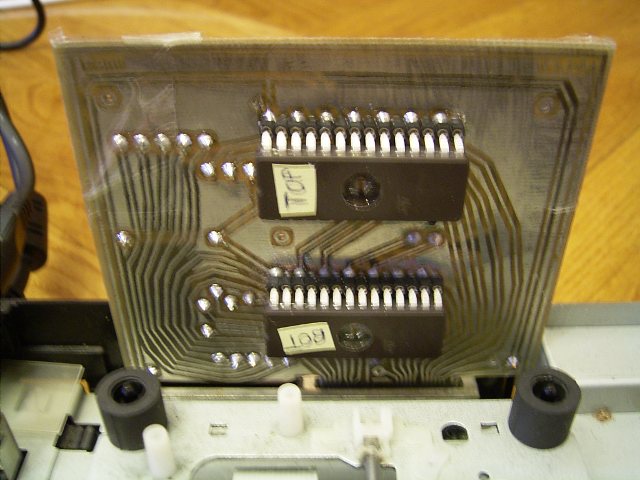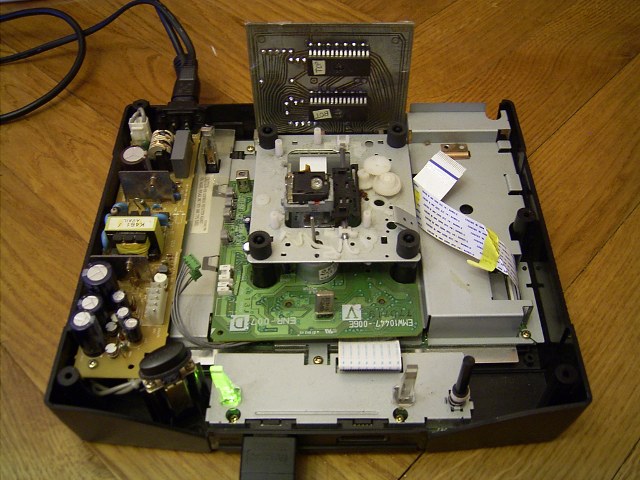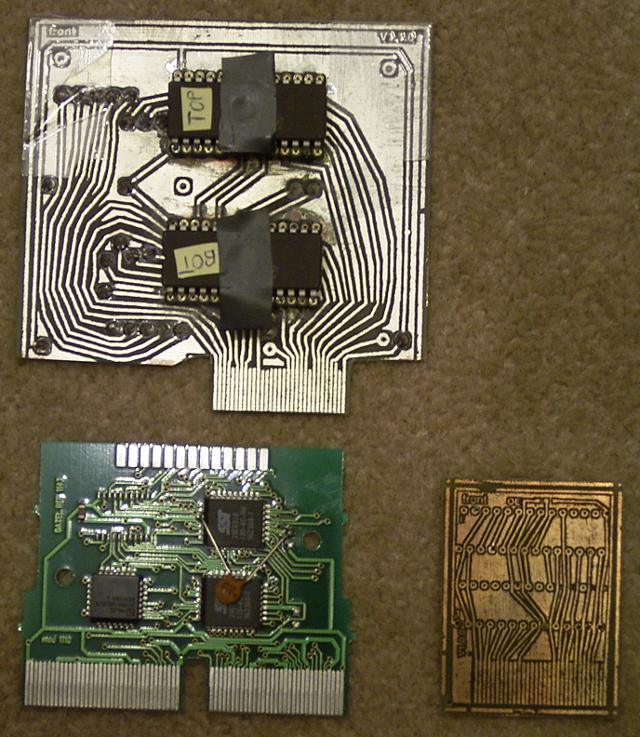Well, I never thought this could ever come true, but it has: I have created a prototype of a boot ROM cartridge for SEGA Saturn and it's been sooo much fun manufacturing the PCB!

The circuit is very basic and simple, it just connects two 8bit EPROMs with 32kB each to the cartridge connector. It's targeted to just contain a boot up executable, to get our game Police Officer Smith running on an unmodified Saturn. I got me a whole stock of tools, accessories and all stuff needed to make this thing (EEPROM programmer, UV-erase lights, dremel, lot's of chemicals, PCB material and so on).

I've created a test application for debugging, it's the Memory Viewer from the Save Game Manager. I tried it out on yabause emulator first, then I programed it on an Action Replay cart and finally on my custom build cart. The app worked fine for debugging the cart. I could first boot up with the AR on an old damaged Saturn and then replace the AR with my cart. Here's a video from youtube: http://www.youtube.com/v/giCAxtRmeoY
You may have experienced by yourself that the Saturn cartridge port isn't that much reliable. Inserting an Action Replay doesn't always work right the first time, the insertion depth often must be corrected. So I'm surprised that the prototype cart works much better in that concern.
The two most interesting things about it are:
1) the PCB was made without any photo mask and UV light. Let me call it the "laser printer, flat iron and bucket method"
2) have a detailed look on the cartridge connector. The big part is missing, I only use the small part and it works! This makes it possible to create a cost effective version.


The circuit is very basic and simple, it just connects two 8bit EPROMs with 32kB each to the cartridge connector. It's targeted to just contain a boot up executable, to get our game Police Officer Smith running on an unmodified Saturn. I got me a whole stock of tools, accessories and all stuff needed to make this thing (EEPROM programmer, UV-erase lights, dremel, lot's of chemicals, PCB material and so on).

I've created a test application for debugging, it's the Memory Viewer from the Save Game Manager. I tried it out on yabause emulator first, then I programed it on an Action Replay cart and finally on my custom build cart. The app worked fine for debugging the cart. I could first boot up with the AR on an old damaged Saturn and then replace the AR with my cart. Here's a video from youtube: http://www.youtube.com/v/giCAxtRmeoY
You may have experienced by yourself that the Saturn cartridge port isn't that much reliable. Inserting an Action Replay doesn't always work right the first time, the insertion depth often must be corrected. So I'm surprised that the prototype cart works much better in that concern.
The two most interesting things about it are:
1) the PCB was made without any photo mask and UV light. Let me call it the "laser printer, flat iron and bucket method"
2) have a detailed look on the cartridge connector. The big part is missing, I only use the small part and it works! This makes it possible to create a cost effective version.


 ! I see at least three chips connected to the cut-out original pcb cart, what types are they? Oh, there's an led attached, too. I think it's difficult to not make wrong connections when so much wires are involved. The case is an original one, right? Manufacturing a good-looking case is one big problem for me, too. What else can you tell about your cartridge?
! I see at least three chips connected to the cut-out original pcb cart, what types are they? Oh, there's an led attached, too. I think it's difficult to not make wrong connections when so much wires are involved. The case is an original one, right? Manufacturing a good-looking case is one big problem for me, too. What else can you tell about your cartridge?
